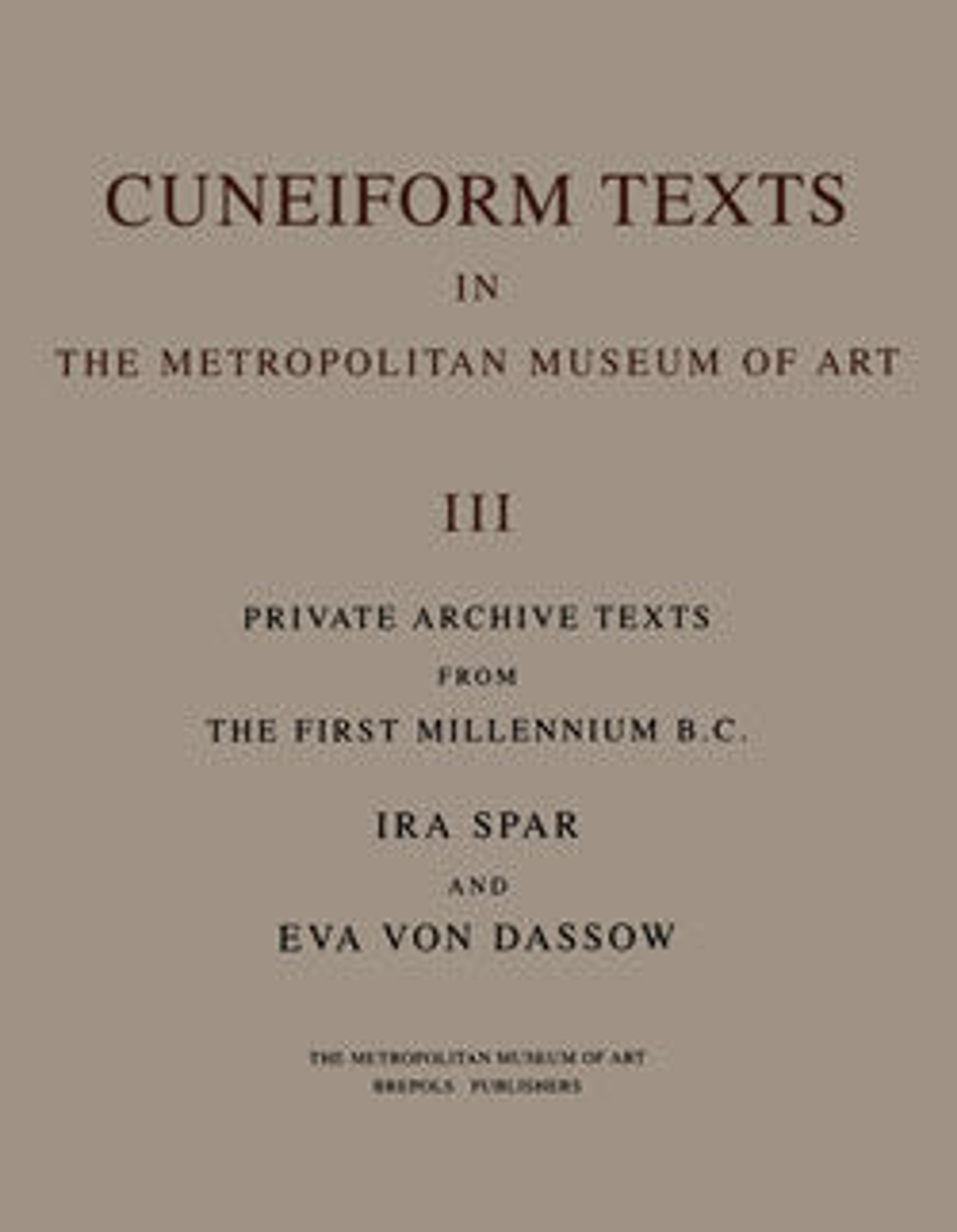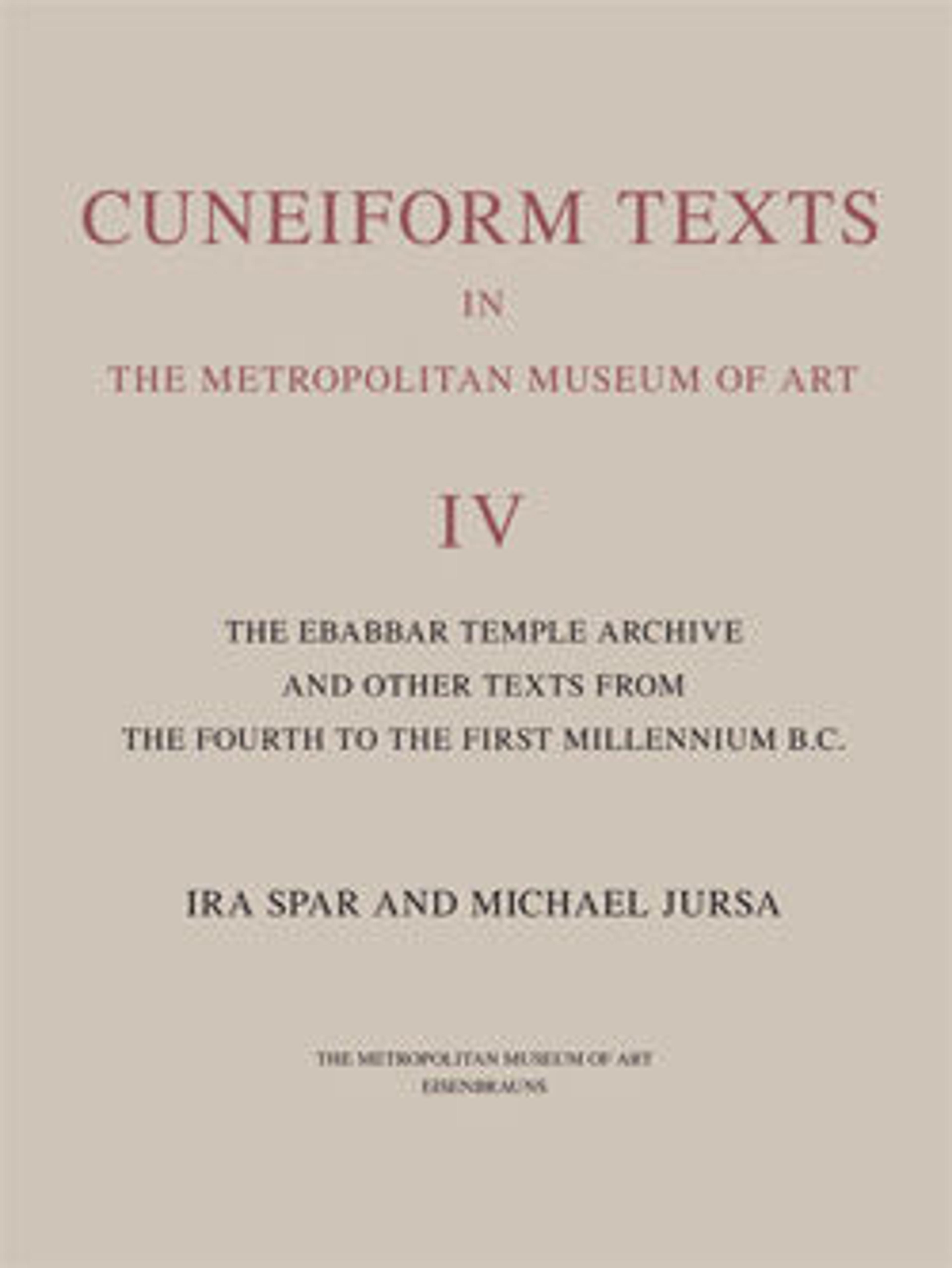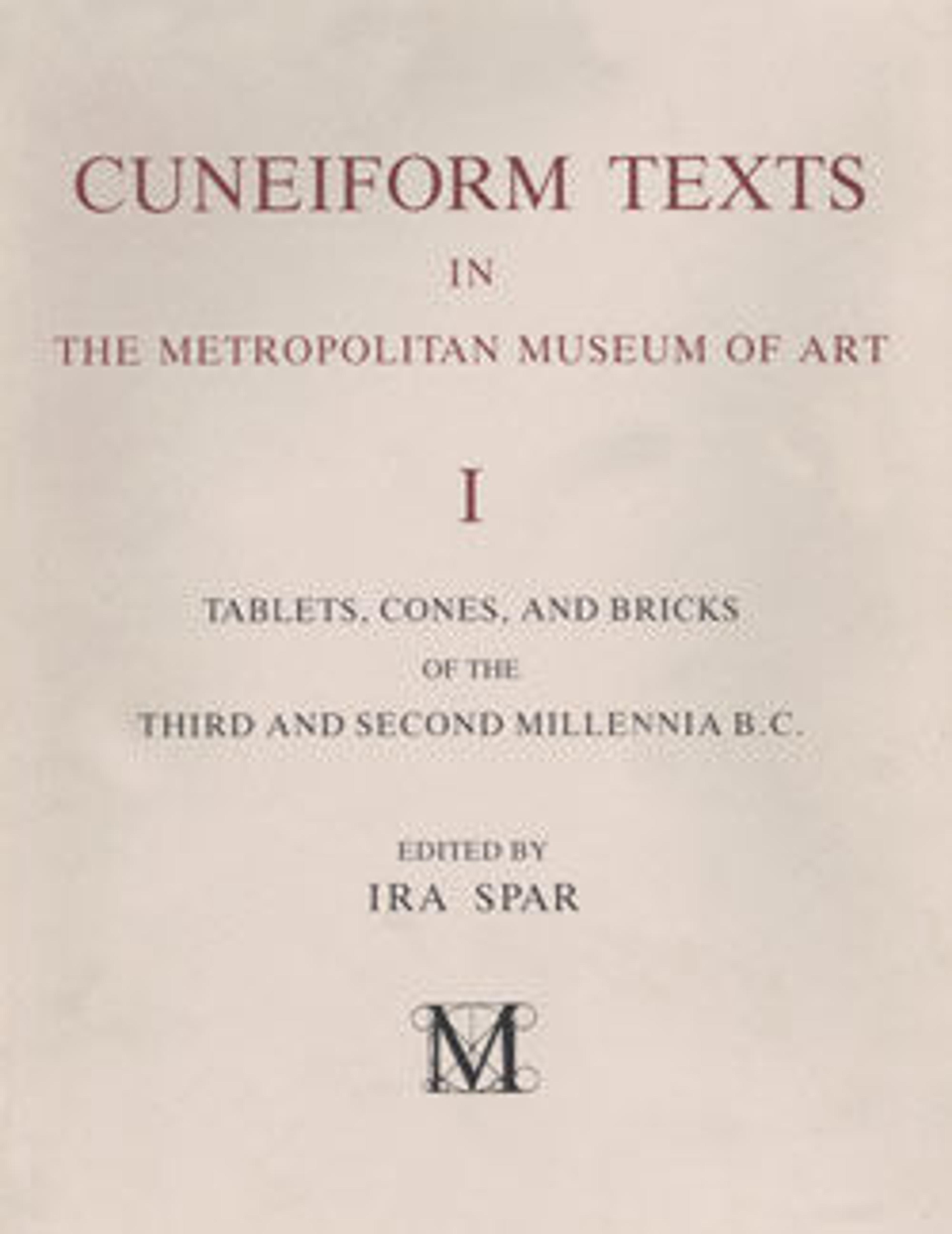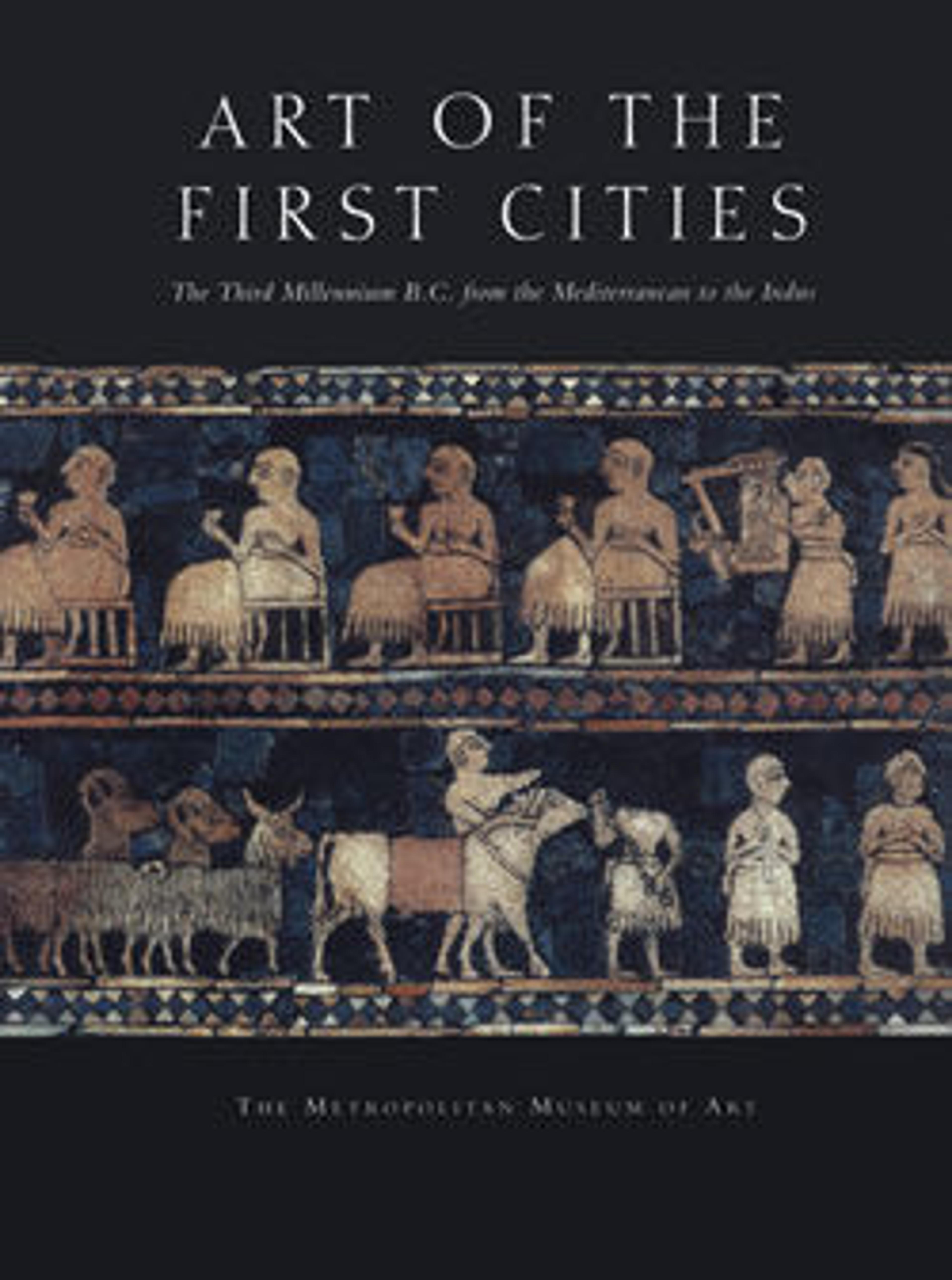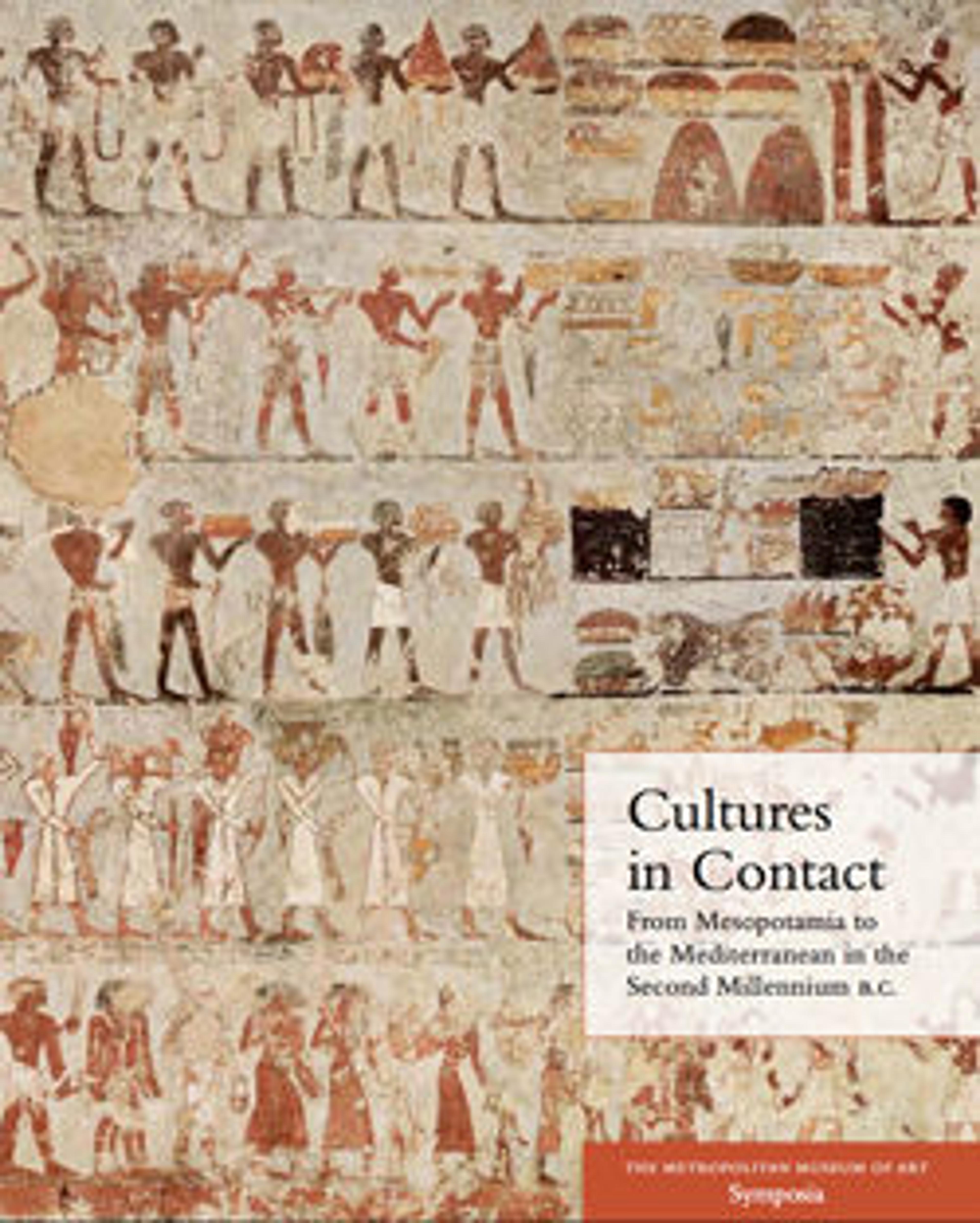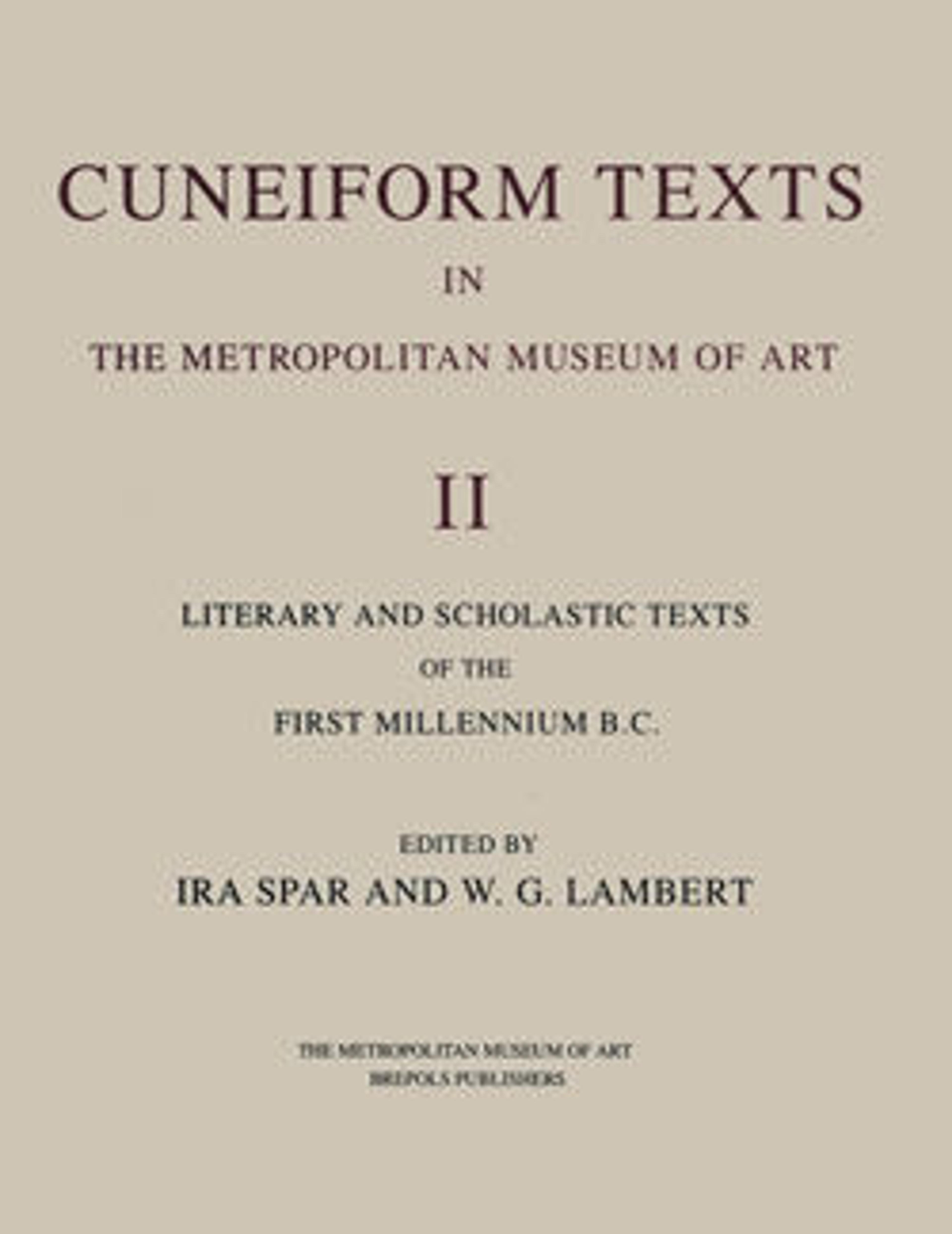
Cuneiform Texts in The Metropolitan Museum of Art. Volume II: Literary and Scholastic Texts of the First Millennium B.C.
This important scholarly work is volume two in a series of four volumes that will publish all the more than six hundred cuneiform tablets in the collection of The Metropolitan Museum of Art. Included are 106 religious, scientific, scholastic, and literary texts, written in Sumerian and Akkadian and primarily dated to the latter part of the first milennium B.C. They shed new light on the civilization of the ancient Near East—on its complex beliefs and customs and surprisingly vast knowledge of mathematics and astronomy—for both the contemporary scholar and interested reader.
The texts are organized in five sections: Documents of the Incantation Priest, Diviner, Physician, and Magician reveal various categories of omens; Literary texts present myths and legends; The Scholastic tradition contains a variety of texts and lists, including mathematical and astronomical texts; and the final section covers Unidentified Fragments. Among the most important texts are No. 42, a fragments of the Babylonian version of the ancient Flood story, and No. 81, which attests to the intellectual achievement of Babylonian astronomers.
Eighteen distinguished international scholars in the field have contributed transliterations and translations of each tablet, and these are accompanied by commentaries and by insightful introductory essays on each genre. The volume was assembled and edited by Ira Spar, Professor of Ancient Studies at Ramapo College of New Jersey, and W. G. Lambert, Professor Emeritus of the University of Birmingham, England. Lambert also contributed several entries and a general introduction that provides contextual information about the transmission of the literary and scholastic tradition in pre-Hellenistic Mesopotamia. The precise facsimile drawings of every tablet handmade by Ira Spar are a valuable visual accompaniment to the text.
This publication reaffirms the Museum's ongoing commitment to promote wider knowledge of Ancient Near Eastern civilization. And significantly, it appears at a time when better understanding of the history and culture of that region of the world holds particular relevance.
Volume one of this series (1988) documents 120 tablets, cones, and bricks from the third and second millennia B.C. Volume three (2000) covers private archive texts from the first millennium B.C. Volume four, in preparation, will include an edition of cuneiform tablets written in the first millennium B.C. and inscriptions on bricks, cylinders, and prisms of royal records of the kings of Babylon and Assyria.
Met Art in Publication
You May Also Like
Press the down key to skip to the last item.
Citation
———, ed. 2005. Cuneiform texts in the Metropolitan Museum of Art. 2: Literary and scholastic texts of the first millennium B.C. / ed. by Ira Spar. New York, NY.
